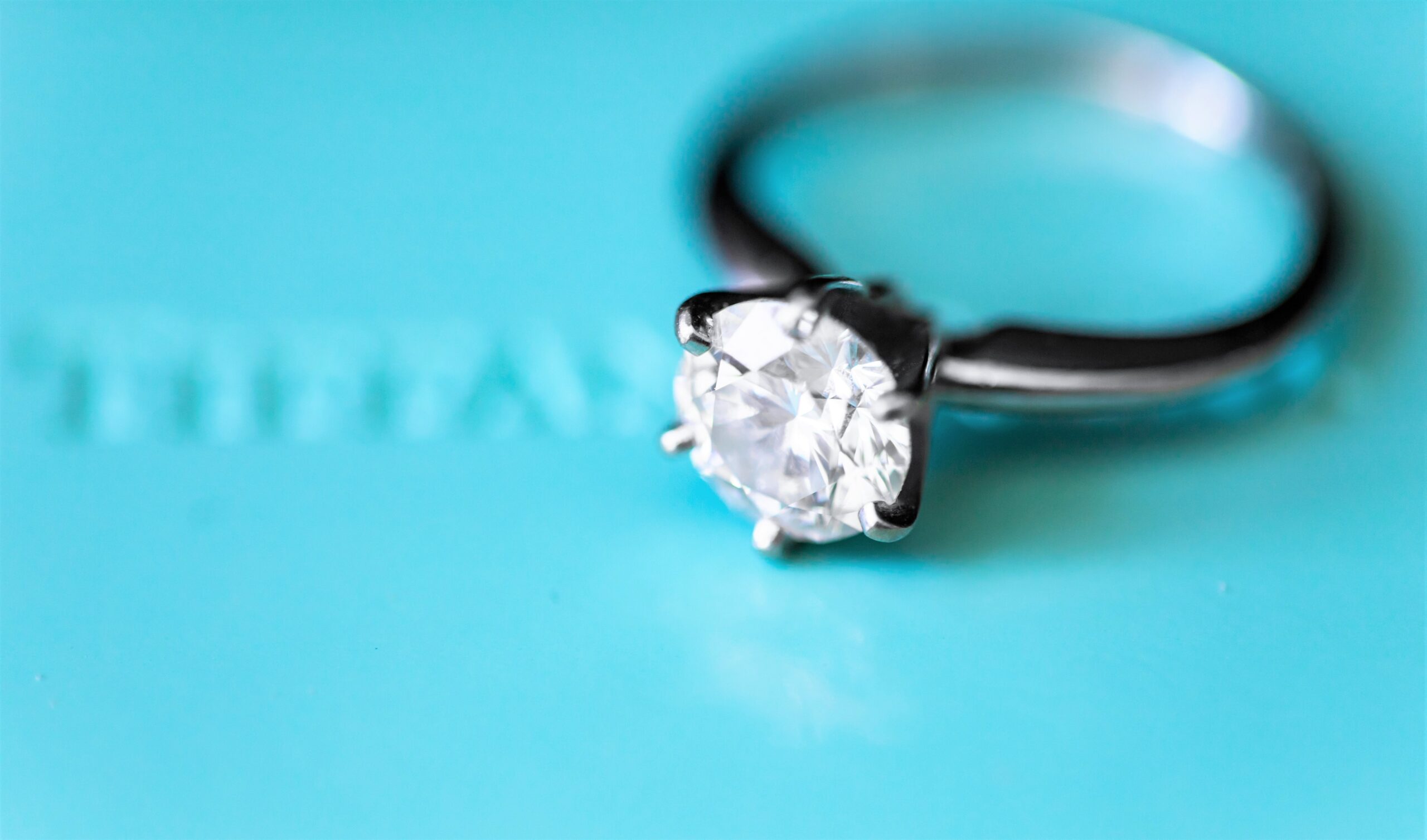Retail “Bankruptcy filing under Chapter 11 of United States Bankruptcy Code”[1] of different Fashion and Retail company first happened later in the mid-year 2016, Several Designer like “Bibhu Mohapatra and retailers The Limited Wet Seal, and Payless etc” all were in the headlines of the paper the moment they applied for Bankruptcy under Chapter 11 protection in the year of 2017. Followed by some other inputs of some other retailers and this shows a constant and never-ending struggle regarding financially and went to the courts to get protection under “Chapter 11 Bankruptcy code- protection against their creditors”[2]
How does the Chapter 11 bankruptcy work?
“Well, it is most widely used method of bankruptcy which allows the company to continue operating during ongoing a restructuring process of the company”[3]. This can be of numerous forms but in a nutshell: The case “under chapter 11 of the United States Bankruptcy Code 1978” begins or starts by filing a lawsuit which is filed by the “debtor” (organisation/establishments who owns the debt of the business-i.e. the retailers in this case) this is followed by the debtor’s proposal implementation the “reorganization plan”. Which are used regarding the elimination of certain classes or categories of debts.
During this time period, the borrower or debtor is often in control or has the passion of his or her assets and continues to run on any business, under the supervision and administration of the Court in law and the “creditors committee”. Organization or a company who has applied for a waiver under “Chapter 11 of the U.S.A Bankruptcy Code 1978” and is struggling to stay in the business we have mentioned below the complex developments can be very effective in resolving temporary problems of the Business or any organisation.
Some Huge Bankruptcies of 1977& 2019 are listed below.
The World famous brand Tommy Hilfiger passed the bad times.
Tommy Hilfiger: –
Tommy Hilfiger for decades now it is one of the most famous American fashion icons, we can instantly recognize the brand from the Red white, and blue nautical flag logo. “Tommy Hilfiger” first launched the brand as “People’s Place in the year 1971” and after a six-year of business in the market the world-famous brand filed for bankruptcy in the year 1977 as their sales started to fall all throughout the 90’s they were growing at an unbelievable record in less than a decade they had grown 20 times larger from 100 million in sales to just under 2 billion. And after that, there was an obvious following decline as shown in the annual report graph in fig below:

His designs began to lose popularity in the market with Hip-Hop artists and sales dropped to 75% all the strategies like host of makeover strategies, women’s sportswear collection failed miserably, the sponsorship of Mary J Blige and Sheryl Crow concerts did not sell many pants in Capri. And while one of its new perfumes works well, it helped the company to again stand out. The company was suffering Referring to the deceased, his words were: “We went bankrupt. I was devastated. I was embarrassed. I had started with nothing and worked so hard, and we were so close to making it really big, but I had taken my eye off the ball. I believed that the business would just continue to do well. But it didn’t, because I wasn’t paying attention to the ‘business’ part of the business … I forced myself to learn the nuts and bolts of the business, and not solely on the creative side. I got hyper-focused on it. I learned how to read a balance sheet. I figured out how to control expenses and figured out a way to build a business on a shoestring budget.”
In the year of 1985, Tommy Hilfiger backing up with Mohan Murjani who was an Indian textile entrepreneur at Murjani Group launched his huge eponymous label.
Hilfiger lost his way in the early 2000s. In one of his interviews, Thomas reflected on his mistakes, where he also mentioned that they were essentially oversupplying the demand and people the consumers are not responding to their new initiative. To review demands, Hilfiger discontinued the clothes. He also thought of reducing the price of the products by reducing the quality of the products. That only means using cheap and low-quality materials and spending less time is designing and quality control as a result of which customers started losing faith in the brand and the revenue fell drastically from $ 2.1 billion to just $1.8 billion in the year 2006. In March 2010.Phillips-Van Heusen an American clothing company bought Tommy Hilfiger Corporation at a price of 3 billion. Phillips-Van Heusen, who has extraordinary experience in the fashion industry, has taken Hilfiger to another level. They know all the ins and outs of the industry from working brands like Calvin Klein, Arrow, Izod, Speedo, and Van Heusen. Hilfiger’s revenue has grown to $ 4.7 billion by 2019.
Presently Tommy Hilfiger himself remained in the company as a principal contractor (designer) and leads the planning, managing, monitoring of the lead “designing team” and also watches the entire creative process.
“The Tommy Hilfiger brand presently is about 43.5% of PVH’s Phillips-Van Heusen total revenue and 44% of the operating profit”[4].
2019 brought to us numerous retail bankruptcies some of them which have filed under Chapter 11 bankruptcy. While others filed for chapter 22 which is that it is the 2nd time moving toward the bankruptcy court. Some are such as
FOREVER 21
Forever 21’s ten-dollar club dresses, tank tops, glittery graphic tees, and ripped are the Must-Have!! closet items for young women worldwide for years. “But the retailer is in trouble as Forever 21 filed for Bankruptcy in September 2019”[5] and planned to close most of the outlet’s stores in “Asia and Europe”. A with time and the fast-growing fashion young people are losing interest in FOREVER 21 fashion style and are showing a greater interest in eco-friendly products. Below shows the annual report of forever 21 in the year 2002 to 2019

Barneys New York Inc. (The American luxury brand):-
As a result of growing speculation, the luxury department store brand “Barneys filed a Chapter 11 lawsuit on August 6 in a U.S. Bankruptcy Court in New-York State”[6]. “And put itself up for sale due to “the soaring rent and failing in their earlier attempts in finding a buyer for cash strapped retailers”. Now 15 outlets got shut down in locations like “Chicago, Las Vegas and Seattle and some smaller stores in Barneys Warehouse locations”.
In 2019 there are numerous other famous brands like Sonia Rykiel who was forced into liquidation. Founded by his eponymous founder in 2017, he arrived after entering the discovery – the equivalent of the French for the protection of “Chapter 11 in the US bankruptcy code 1978”[7]- this spring. “In April, First Heritage Brands, the company of Sonia Rykiel’s parents, sought legal protection from their creditors while seeking new ownership, which ultimately bore no fruit.”[8]
Roberto Cavalli
The famous brand Roberto Cavalli have also filed “Chapter 7 Bankruptcy protection in New York”[9] on April 4th, 2019 court from 200 creditors who were outstanding at that point of time as if in the present time An Italian court-approved Roberto Cavalli and gave them the permission to sell the company SPA to “real estate developer DAMAC in July 2019 the company currently owns 100% of the Cavalli share”[10].
Similarly, there are Pretty Green, Diesel, Payless, Inc Charlotte Russe who went to Chapter 11 bankruptcy in 2019. The table below shows the following recent Fashion and retail Bankruptcies: –
| Year | Brand’s Names |
| 1. 1997 to 2001 | · 2001 – Converse
· 1994 – “JNCO” · 1999 – “Loehmann’s” · 1992 – “Macy’s” · 1989 – “Fiorucci” · 1977 – “Tommy Hilfiger” |
| 2. 2008 | · December 2008 – “Bill Blass”
· February 2008 – “Heatherette” |
| 3. 2009 | · October 2009 – “Yohji Yamamoto”
· August 2009 – “Escada” · May 2009 – “Christian Lacroix” · February 2009 – “Gianfranco Ferré”
|
| 4. 2010 | · November 2010 – “Loehmann’s”
· April 2010 – “Rock & Republic” |
| 5. 2012 | · August 2012 – “Betsey Johnson”
· April 2012 – “Aquascutum” |
| 6. 2013 | · December 2013 – “Loehmann’s”
· July 2013 – “Nicole Farhi” |
| 7. 2014 | · December 2014 – “Deb Stores”
· Dec 2014 – “dEliA*s” · Jul 2014 – “Love Culture” · Mar 2014 – “Ashley Stewart” |
| 8. 2015 | · Dec 2015 – “Tamara Mellon”
· October 2015 – “American Apparel” · September 2015 – “Quiksilver” · April 2015 – “Frederick’s of Hollywood” · March 2015 – “Karmaloop” · February 2015 – “Cache” · January 2015 – “Wet Seal” |
| 9. 2016 | · December 2016 – “Yogasmoga”
· November 2016 – “AmericanApparel” · November 2016 – “Nasty Gal” · May 2016 – “Aeropostale” · April 2016 – “Pacific Sunwear” · January 2016 – “Joyce Leslie” |
| 10. 2017 | · Dec2017 – “Charming Charlie”
· Nov 2017 – “Styles for Less” · Sep 2017 – “Aerosoles” · Aug 2017 – “Perfumania” · Jul 2017 – “Alfred Angelo” · Jul 2017 – “True Religion” · Jun 2017 – “Papaya Clothing” · May 2017 – “Rue21” · Apr 2017 – “Jaeger” · Apr 2017 – “Payless, Inc” · Mar 2017 – “BCBG Max Azria” · Feb 2017 – “Wet Seal” · Jan 2017 – “The Limited” · Jan 2017 – “Bibhu Mohapatra” |
| 11. 2018 | · November 2018 – “David’s Bridal”
· Jun 2018 – “J. Mendel” · May 2018 – “Carven” · May 2018 – “Rockport Group” · Apr 2018 – “Nine West” · Mar 2018 – “Claire’s Stores” · Feb 2018 – “Charlotte Olympia” |
| 12. 2019 | · Sep. 2019 –“ Forever 21”
· Aug 2019 – “Barneys New York” · Jul 2019 – “Sonia Rykiel” · Apr 2019 – “Roberto Cavalli” · Mar 2019 – “Pretty Green” · Mar 2019 – “Diesel” · Feb 2019 – “Payless, Inc”. · Feb 2019 – “Charlotte Russe.” |
| 13. 2020 | · December 2020 – “Francesca’s”
· November 2020 – “Arcadia Group” · November 2020 – “Furla USA” · September 2020 – “Century 21” · August 2020 – “Stein Mart” · August 2020 – “Lord & Taylor, Le Tote” · August 2020 – “Tailored Brands” · July 2020 – “Ascena Retail Group” · July 2020 – “RTW Retailwinds” · July 2020 – “Brooks Brothers” · July 2020 – “G Star Raw” · July 2020 – “Lucky Brand Dungarees” · May 2020 – “DVF Studio U.K.” · May 2020 – “Lulu Guinness” · May 2020 – “J.C. Penney” · May 2020 – “Neiman Marcus Group” · May 2020 – “ALDO Group” · May 2020 – “John Varvatos” · May 2020 – “J.Hilburn” · May 2020 – “J. Crew” · April 2020 – “True Religion” |
| 14. 2021 | · June 2021 – “Alex and Ani”
· April 2021 – “Collected Group” · March 2021 – “Ralph & Russo” · February 2021 – “Belk Inc” · February 2021 – “Solstice Marketing Concepts” · January 2021 – “L’Occitane, Inc.” |
Source: The Fashion Law
In the year 2020, we see some big companies like “Neiman Marcus” the signature retailer famous for selling apparel, handbags, etc. for women’s, men’s children’s and “J.C Penney” another brand famous for their marketing apparel, home furniture’s, cosmetics, etc. also filed for bankruptcy about sixty percent of the retailers in 2020 who all filed for Bankruptcies under chapter 11 through August listed near about a hundred million dollars in asset holding compared with fifty percent of fillings during the same period in the year 2019 and thirty-six percent in 2018 as analyzed by BOF.
Conclusion: –
The main reason for this can be the Covid-19 health care crisis where during this time many businesses were completely closed for a long time except for those who sell essential items in the market. So 2020 became a very tough spot for the retailers who were suffering from losses already were even hit harder. The liquid was disrupted and sales plunged into a vicious collapse. The number of Bankruptcies in the year 2020 was really huge compared to the other years like about 60% of the Retailers has suffered losses and went for filing Bankruptcies. The epidemic has accelerated many industry trends, including more growth in the digital business. Consumer habits changed, and the things they wanted to buy changed suddenly. Clothing sales have dropped dramatically, as working from home became the norm. And instead, shoppers are looking to buy hobbies at home, such as bicycles and puzzle games which will help them to pass their spare time and will add a little fun to their monotonous life. This has greatly benefited companies like (“Amazon”, “Walmart” and “Target”), which have strong online businesses and sell all the little ones. So we can see that COVID-19 can be the biggest reason for all such Bankruptcies in the Fashion and retail business all over the world.
[1] U.S.C. Bankruptcy code chapter 11 (1978)
[2] U.S.C. Bankruptcy code chapter 11 (1978)
[3] TFL, Retail Woes: A Running List of Fashion& Retail Bankruptcies, https://www.thefashionlaw.com/retail-woes-a-bankruptcy-timeline/ (last visited June.10, 2021).
[4] TFL, Retail Woes: A Running List of Fashion& Retail Bankruptcies, https://www.thefashionlaw.com/retail-woes-a-bankruptcy-timeline/ (last visited June.10, 2021).
[5] Lauren Thomas, The 10 biggest retail bankruptcies of 2020, CNBC (DEC.26,2020,9:00 AM), https://www.cnbc.com/2020/12/26/the-10-biggest-retail-bankruptcies-of-2020.html
[6] TFL, Retail Woes: A Running List of Fashion& Retail Bankruptcies, https://www.thefashionlaw.com/retail-woes-a-bankruptcy-timeline/ (last visited June.10, 2021).
[7] U.S.C. Bankruptcy Code chapter 11 (1978)
[8] TFL, Retail Woes: A Running List of Fashion& Retail Bankruptcies, https://www.thefashionlaw.com/retail-woes-a-bankruptcy-timeline/ (last visited June.10, 2021).
[9] U.S.C.Bankruptcy Code Chapter 7 (1978)
[10] TFL, Retail Woes: A Running List of Fashion& Retail Bankruptcies, https://www.thefashionlaw.com/retail-woes-a-bankruptcy-timeline/ (last visited June.10, 2021).











Awesome! Keep up the good work!
Awesome!! ♥️
The author did a great job
Very informative. Keep it up!! 👏👏
Such detailed informative work. Good job!
The article is quite impactful
Amazing work!
The article was so information, it can be easily understood by a layman.
Hats off to the author!
You researched well and have wonderfully penned down so vividly in simple words. Hope to read more articles by you soon. ❤
Good one debayan. Keep it up!
Amazing work!
Keep on doing this work!
Nice. All the Best
Very nicely written.
Good wark 👍